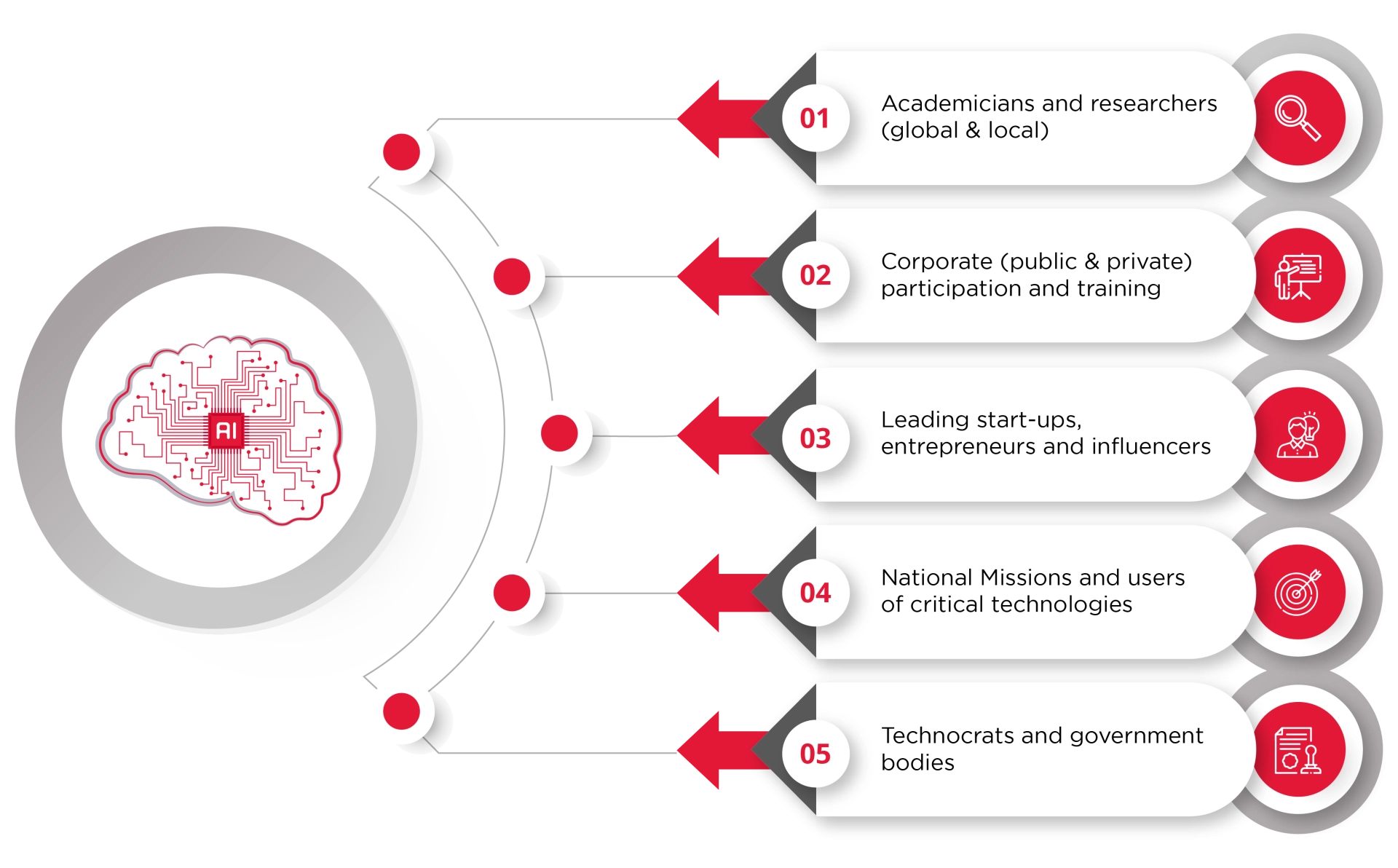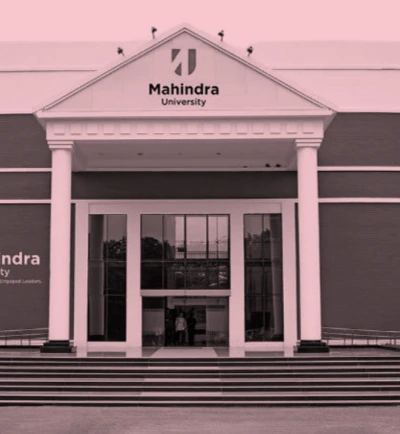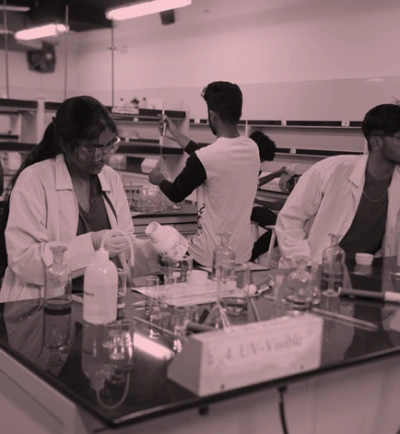Centre of Excellence in Artificial Intelligence
The Centre of Excellence in Artificial Intelligence at Mahindra University is a small, active and growing group of researchers that came into effect on August 1, 2018. This Centre is located at the Supercomputer Laboratory with advanced NVidia GPU-based supercomputer DGX-1 and other top-of-the-line CPU-based computing servers. The B.Tech program in Artificial Intelligence offered by the Ecole Centrale College of Engineering in Mahindra University is also academically and technically supported by us.
Key Focus Areas
Our Research Focus Areas
Investigations
Applications
Projects
External Projects
| Title | Amount | Organization | Duration |
|---|---|---|---|
| Missile Launch Improvement using Evolutionary and Multi-Objective Evolutionary Algorithms | INR 9.2 Lakhs | Defence Research and Development Organization | 3 Years (2016 – 2019) |
| Development of Real-time, Adaptive, Intelligent Mechanisms for monitoring and control of complex industrial processes within Industrial IoT Frameworks | 23 Lakhs | Cyber-Physical Systems Division, Department of Science & Technology, GoI | 3 Years (2018 – 2021) |
| Development of Warehouse Resource Allocation System | 5.2 Lakhs | GROUND INC., Japan | 0.5 Years (2020) |
Internal Projects
| Title | Amount | Organization | Duration |
|---|---|---|---|
| Design of a Novel Machine Learning Algorithms using High-Performance Computing for Next Generation Sequence Analysis of Soybean Genomes | 1.5 Lakhs | Ecole Centrale College of Engineering, Mahindra University, Hyderabad | 2 Years (2019 – 2021) |
| Novel Deep Learning Architectures | 0.5 Lakhs | Ecole Centrale College of Engineering, Mahindra University, Hyderabad. | 2 Years (2019 – 2021) |
Publications
| International Journals |
|---|
|
| International Conferences |
|---|
|
| Book Chapters |
|---|
|
Computing Facilities in Supercomputer Laboratory
The Supercomputer Lab of Mahindra University is created out of the baseline requirements for supporting high intensity computations for Artificial Intelligence research and applications, that incorporate Machine learning, Deep learning and Data Science.
The core composition of this lab is the DGX-1 supercomputer platform, at whose kernel is a dual-core CPU server with 20 processors and 8 Tesla V100 GPU cards made up of 40,960 Nvidia CUDA cores, all connected through NVLink which minimizes internal communication overheads. On this kernel is built the platform that is a complex stack of components and software including AI Deep Learning frameworks, libraries and drivers.
This software stack is supported by DGX-1 cloud management services which continually provide updates and additional inputs. The software stack is composed of the most popular deep learning frameworks, as well as Nvidia DIGITS deep learning training application, third-party accelerated solutions, the Nvidia Deep learning SDK, Docker and drivers.
Deep Learning tasks, particularly training of complex Artificial Neural Network (ANN) architectures with many layers, hundreds of thousands of parameters, and tens of thousands of data samples, take enormous computing times if the task is performed serially on a single-thread. Instead, when launched on parallel threads, the training data can be split into multiple subsets and each launched on one thread so that the ANN training can be speeded up, ideally, by a factor equal to the number of threads. The GPU-based architecture of DGX-1 works on this principle to speed up AI applications.
The DGX-1 heart of the Mahindra University Supercomputer Lab is reinforced with a number of top-of-the-line CPU Servers that can be seamlessly scaled up in numbers. A fast Infiniband-based network connectivity is in the process of installation to connect these servers so that CPU-based parallelism can also be attained for simulations not attuned to GPU processing.
A Dassault-Systemes based 3D-Experience package is also installed in this lab. This package is an overlay on a suite of software that includes CATIA, DELPHI and other related modules, and facilitates Augmented Reality – Virtual Reality based immersive experience. A set of 30 Workstations coupled with a Server are installed and linked to the other platforms of this laboratory for facilitation of the complete 3D-Experience package. This will enable the attainment of a 3D-Experience Centre of Excellence at this lab.
Thus from the above matter it will be clear that the Supercomputer Laboratory, that is home to our Centre of Excellence in Artificial Intelligence – also supports 3D-Experience and other facilities for high-intensity computing in a spectrum of domains like Mechanical, Aerospace, Civil, Electrical, Communications and Natural Sciences. At the core of this is of course, massive computing power, enabled by the DGX-1 Supercomputer, multiple powerful Servers, and a set of 30 Workstations, all interconnected through an extremely fast data communication network. What is not so apparent, however, is that these co-located facilities can themselves be the trigger for a new and unique experience in an Indian Research Institution, namely, the coupling of AI with the trans-domain world of engineering in multiple new and creative ways of which visionaries can see possibilities that have yet to be manifested in the mundane world.
The Center will bring together the following Stakeholders

Contact : deanresearch@mahindrauniversity.edu.in









